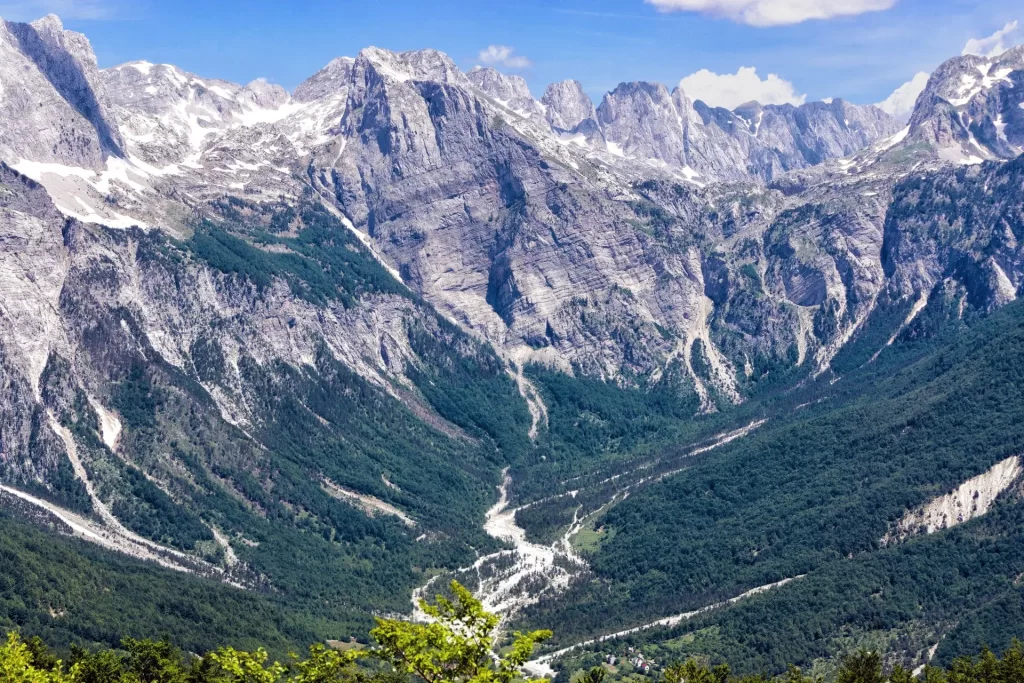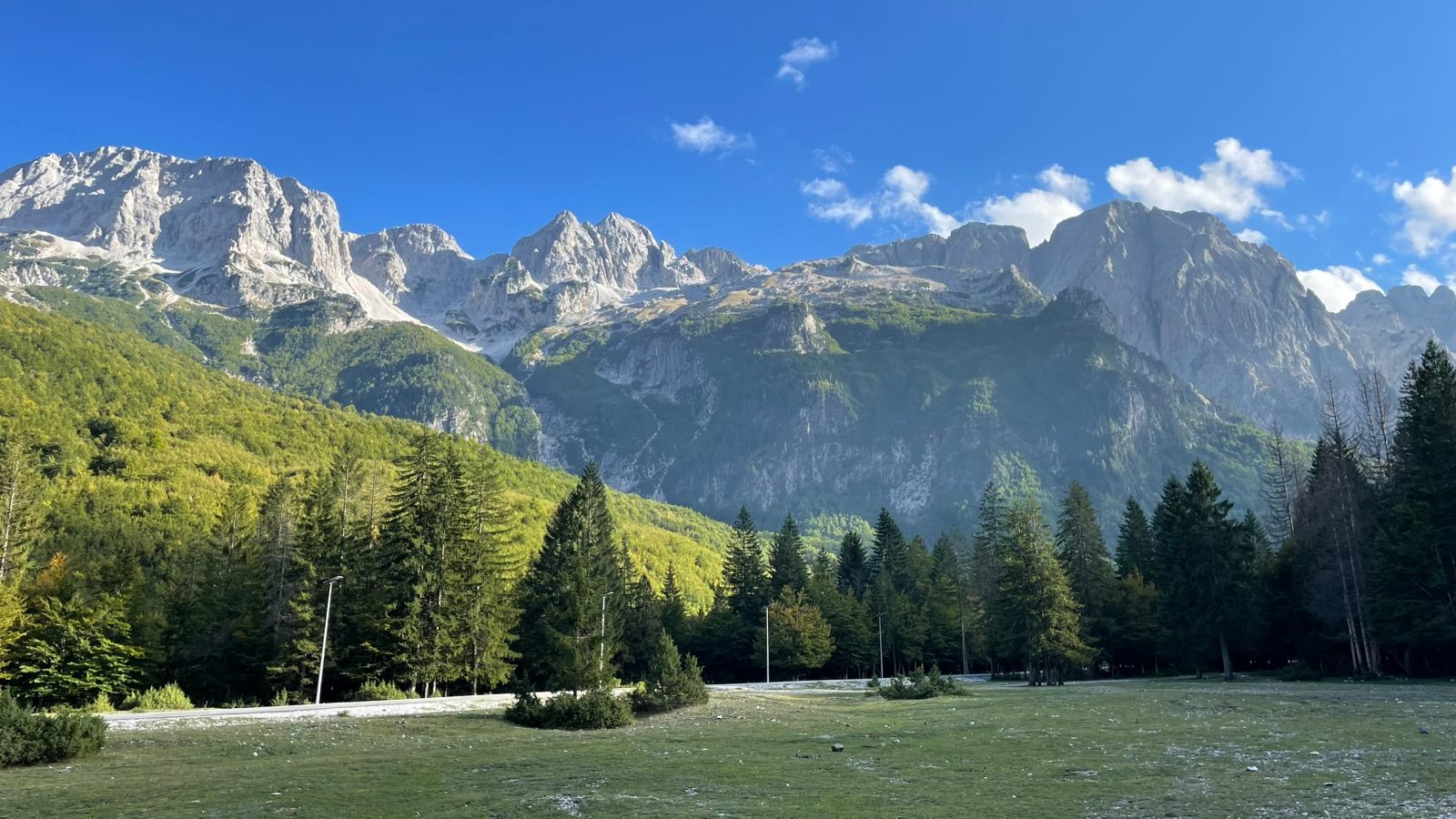
- The Alps of Albania are a pristine natural sanctuary with rich biodiversity and stunning landscapes.
- Their rugged terrain features towering peaks, lush valleys, and unique geological formations.
- The region nurtures diverse flora and fauna, including endemic species and protected ecosystems.
- Deep-rooted cultural traditions and histories are intertwined with the mountains’ natural beauty.
- Adventure activities like trekking, mountaineering, and eco-tourism make it an appealing destination.
Table of contents
- Geography and Physical Characteristics of the Alps
- Diverse Landscape and Terrain
- Peaks, Valleys, and Geological Features
- Climate Throughout the Alps
- Natural Environment and Biodiversity
- Rich Flora and Fauna
- Protected Areas and National Parks
- Ecological Importance of Alpine Ecosystems
- Historical and Cultural Context of the Alps
- Local Communities and Cultural Traditions
- Mountains of Legends and Historical Significance
- Traditional Lifestyles and Cultural Customs
- Exploring the Region: Tourist Activities and Exploration
- Engaging Activities for Tourists
- Accessibility, Ideal Times, and Scenic Routes
- Tips and Precautions for Visitors
- Overcoming Challenges and Promoting Preservation
- Addressing Environmental and Social Challenges
- Embracing Sustainable Tourism and Preservation
- Conclusion: The Unique Value of the Albanian Alps
The **Alps of Albania**, known as the Albanian Alps or the Accursed Mountains, are a *hidden gem* on the European continent. As the southern extension of the Dinaric Alps, these formidable peaks define the landscape of northern Albania, extending into Kosovo and Montenegro. This pristine region offers much more than just breathtaking views—it is a critical biodiversity hotspot and a vibrant cultural tapestry. The towering summits, lush valleys, and centuries-old traditions beckon explorers and nature lovers alike ([Source](https://undp.org/), [Source](https://worldbank.org/), [Source](https://moe.gov.al/)).
Geography and Physical Characteristics of the Alps
Diverse Landscape and Terrain
The geography of the Albanian Alps is *nothing short of spectacular*. With jagged limestone and dolomite peaks shaped over millennia, the landscape narrates a story of geological evolution. U-shaped valleys like Valbona and Thethi, carved by ancient glaciers, are the region’s crown jewels. These valleys, along with karst formations such as caves and sinkholes, create a rugged yet captivating terrain, largely untouched by modern development. The region’s elevation changes foster diverse ecosystems, making it a paradise for both flora and fauna.
Peaks, Valleys, and Geological Features
The highest peak, Maja e Jezercës, rises to 2,694 meters, challenging climbers with its steep slopes and rewarding panoramic vistas. Other notable summits include Maja e Popljugës and Maja e Radohimës. These mountains embrace deep valleys like Valbona and Thethi, where shifting light and shadows paint a constantly changing scene. The Gashi River Strict Nature Reserve exemplifies the region’s ecological importance, featuring preserved beech and fir forests, active karst springs, and sinkholes.
Climate Throughout the Alps
The Alps of Albania experience a *continental climate*, marked by prominent seasonal changes. Winters often bring heavy snowfall, transforming the peaks and valleys into a winter wonderland that lasts late into spring. Summers are generally mild but can be punctuated with sudden storms that add drama to the landscape. High precipitation, especially on the western slopes, nurtures the region’s lush biodiversity and vibrant plant life
Natural Environment and Biodiversity
Rich Flora and Fauna
This mountain range is a *biodiversity hotspot*. Dense forests of beech, pine, and fir stretch across the landscape, interspersed with colorful alpine meadows. The forests are home to brown bears, wolves, and elusive lynx, while chamois graze in the highlands, and bird species like eagles and vultures soar overhead. Endemic plant species thrive here, adding to the region’s ecological significance ([Source](https://wwf.panda.org/), [Source](https://iucn.org/), [Source](https://biodiversitystrategies.al/)).
Protected Areas and National Parks
Protected areas like Thethi National Park and Valbona Valley National Park are vital in conserving biodiversity. Alongside the Gashi River Strict Nature Reserve, these parks focus on habitat preservation, ecological education, and anti-poaching initiatives—ensuring future generations can experience this natural wonderland ([Source](https://wwf.panda.org/), [Source](https://iucn.org/), [Source](https://moe.gov.al/)).
Ecological Importance of Alpine Ecosystems
The Alps of Albania are essential for their ecological services. They regulate water flow, sequester carbon, and serve as corridors for endangered species. Their ecosystems maintain water quality, prevent soil erosion, and support regional biodiversity, emphasizing their vital environmental role in the broader Balkans ([Source](https://wwf.panda.org//), [Source](https://iucn.org/)).
Historical and Cultural Context of the Alps
Local Communities and Cultural Traditions
Embedded within the mountains are communities rich in tradition. Their livelihoods revolve around livestock, forestry, and increasingly, eco-tourism. Their folklore, music, and crafts reflect a resilient cultural heritage. The “Kanun”—an ancient Albanian legal code—still influences social norms in these remote villages.
Mountains of Legends and Historical Significance
The Albanian Alps stir the imagination with stories of heroes and legends tied to the landscape. Their remote nature has preserved traditions and myths, serving as a cultural shield against outside influences, and fostering a strong sense of identity.
Traditional Lifestyles and Cultural Customs
Shepherding, farming, and artisanal crafts like weaving and woodcarving are the daily rhythms. Festivals and gatherings celebrate local customs, where hospitality and communal bonding remain central. These practices sustain the community’s cultural fabric amidst modern changes.
Exploring the Region: Tourist Activities and Exploration
Engaging Activities for Tourists
The Albanian Alps are an *adventure haven*. Popular activities include hiking the renowned “Peaks of the Balkans” trail, mountaineering expeditions, and eco-tours. Visitors can fish in mountain streams, camp under the stars, and explore cultural landmarks, making each journey uniquely memorable.
Accessibility, Best Times, and Scenic Routes
Reaching the Alps involves rugged journeys best undertaken from June to September when trails are accessible. The *Peaks of the Balkans* trail, a multi-country trek, showcases stunning landscapes. Ascents like Maja e Jezercës and explorations of Valbona and Thethi valleys promise breathtaking experiences. The region’s unpaved roads often require a 4×4 vehicle, adding to the adventure.
Tips and Precautions for Visitors
Preparation is key: pack suitable clothing, sturdy footwear, and consider hiring local guides for longer treks. Respect local customs and traditions to foster positive interactions. Be aware that infrastructure can be limited, with remote areas experiencing sporadic cell coverage. Planning ahead ensures safety and a richer experience.
Overcoming Challenges and Promoting Preservation
Addressing Environmental and Social Challenges
The region faces threats like deforestation, overgrazing, and climate change. Outmigration, especially among youth, risks losing cultural traditions and traditional livelihoods, threatening the region’s sustainability.
Embracing Sustainable Tourism and Preservation
To combat these threats, community-based tourism initiatives promote eco-friendly travel and local economic development. Conservation programs focus on ecosystem restoration and sustainable practices, aiming to protect this natural treasure for future generations.
Conclusion: The Unique Value of the Albanian Alps
Overall, the Alps of Albania are a rare combination of untouched natural beauty, vibrant biodiversity, and deep-rooted cultural traditions. Their rugged peaks and lush valleys promise adventure, serenity, and cultural richness. Protecting this region requires ongoing efforts, but the rewards—a glimpse into Europe’s last pristine wilderness—are truly priceless. When you visit, remember to respect and preserve this extraordinary landscape, ensuring it remains a treasure for generations to come.


0 Comment